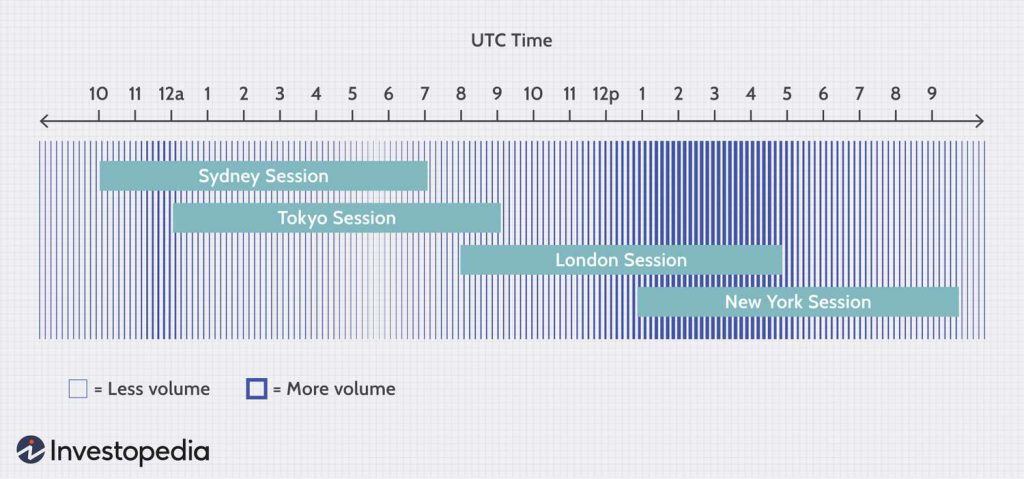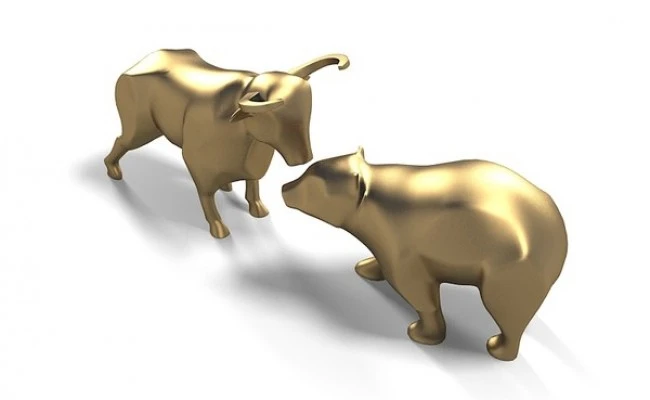While dealing with financial markets, one must come to hear about the Forex
market. The following essay attempts to expound on what the Forex market
actually is and delves deep into every aspect of it.
Very briefly, the Forex market is one of the world’s largest trading markets which
operates in a decentralized manner, meaning that it does not have a single
specific operating location.
Trading in a nutshell
Throughout history, people have looked for different possible ways to obtain
money and preserve its value. This quest has led to innovations which has shaped
and reshaped the economy and helped societies leap towards progress. Let’s take
for example the simple act of buying a book. While buying a book, one must pay
its price in the current currency. The act of transferring money into the market
further perpetuates the market towards more production and thus more capital.
Production and demand tend to keep the market in action and this leads to
creation of capital and creation of capital in return leads to more demand and
production. This cycle tends to hold the economy together. Now each country
tends to have its own unique currency. In order to circulate through the system,
one has to do so with the that its unique currency. Outside currencies are not
mostly accepted.
One might wonder what it takes to exchange currencies. This question laid the
groundwork for what it came to be known as currency exchange. The difference
in exchange rates in different countries attracted attention. People realized that
they would be able to make a profit from this rate difference and this was the first
cornerstone of the formation of an international market which was later called
Forex, or the foreign currency exchange market. Nowadays, one can make a profit
by dealing in buying, selling and exchanging the value of currencies of various
countries. With the growing expansion of the market and the increase if the
number of its traders, it has become possible to provide other diverse services
such as buying and selling digital and cryptocurrencies and trading on very
prominent stock indices. All in all, the Forex market is widely held popular by
different traders due to its prominent features.
Forex working hours
one crucial piece of information any traders on the Forex market needs to have is
the working hours. The Forex market is active on a 24-hour basis for 5 days of the
week. It tends to close from Friday evening to Sunday afternoon. Among the
working hours, there are more pivotal hours in action due to the opening of
prominent markets with High liquidity volume. Some of the most important Forex
working hours are as follows:
– Tokyo market opens at 9 AM and closes at 5 PM in local time.
– London market opens at 8 AM and closes at 4 PM in local time.
– New York market opens at 8 AM and closes at 5 PM in local time.

The emergence of the Forex financial market
Due to constant shift in the use of currency and with technological advances,
currency markets advanced in a more unprecedented manner than any other
time in history. With the strengthening of the currencies that had previously
remained under the banner of political systems dependent on the government
and the formation of emerging markets in Southeast Asia that had the potential
to attract new funds and currencies, the need for the formation of a multi-
purpose currency market was felt more than ever. The forex market was originally
formed for interbank currency exchanges. The central banks od different
countries used this market as means to exchange capital. Due to different
currency sources and the exports and imports of different objects, a shift
happened in the balance of currencies and thus countries needed to convert
currencies. To carry out this conversion, they used the bank exchange market.
Gradually, this became a trend and companies such as investment and insurance
institutions also entered this market to profit from the fluctuations in the market.
The expansion of this market progressed until Forex brokers entered the arena.
By checking and estimating the capacities of this market by the forex broker, it
was found that this type of market has the ability to have small customers, so
they can also benefit from the fluctuations of this market.

How did the Forex market begin to operate initially?
Initially, the volume of transactions, which was called the lot, was equivalent
to 100,000 dollars. Understandably, this number was quite high for customers.
So Forex brokers intervened and defined lower trading volumes such as one
tenth of a lot or one percent of a lot. Although, the newly defined prices
seemed manageable, they still were large numbers for a wide variety of
customers.
Rectifying this problem required brokers to provide the customers with
customers. This system was rather similar to the system the banks use in order
to give loans. As a solution, the trading lever (leverage) was placed before the
customers by the brokers. Leverage is the use of capital to invest in a currency
by borrowing money from a broker. It has the ability to magnify wins as well as
losses. For example, an investor might buy the euro versus the U.S. dollar with
the hope that the exchange rate will rise. The trader would buy the EUR/USD at
the ask price of $1.10. Assuming the rate moved favorably, the trader would
unwind the position a few hours later by selling the same amount of EUR/USD
back to the broker using the bid price. The difference between the buy and sell
exchange rates would represent the gain (or loss) on the trade. Although the
amounts were small at first and it satisfied, it caused the brokers to suffer losses
in some cases. So brokers turned to creating margin to manage loss. When you
open your trading account, they choose its leverage. When you open your
trading account, its leverage is chosen by default by the broker according to the
type of your trading account. If you wish, you can submit a request to change the
leverage to the desired broker. For example, if you choose your leverage 1:500, it
means that 500 times leverage will be added to your money. For example, if you
choose your leverage 1:500, it means that 500 times leverage will be added to
your money. But this leverage is as attractive as it is dangerous, because if you
use the above leverages, with the slightest movement of the market in the
opposite direction of your trade, your entire capital may be lost quickly. So you
should be very careful when choosing trading leverage, based on your trading
and financial strategy.
At the inception of Forex, only the value of currencies was traded. Gradually,
with the increasing competition between brokers, the range of transactions
became wider and came to include various assets such as gold, oil, stock and
crypto. What makes Forex globally attractive is the fact that since currency
exchanges take place to each other (that is, one product is always traded against
another), one can even make profits by selling currencies. For example, if the
euro is increasing in price against the dollar, it means that the dollar is
decreasing against the euro, and in this way you can profit from both forms of
trading (buying and selling).
CFD trades in Forex
Along with the entry of different traders and the expansion of the market, a
contract for differences (CDF) was formed. Rather than conducting main
transactions, profit is earned through the changes of the values of the goods. CDF
is a type of derivative trading which allows a trader to buy and sell an asset for a
future date. It thus helps to trade in commodities, stocks, and digital currency by
predicting price ups and downs and fast market movements.
OTC Market
OTC Market or an over-the-counter market is a decentralized market in which
traders tend to trade instruments directly between two parties without the need
for a central broker. This market does not have a physical location. Rather, all
trades are done electronically. Due to the more expanding and growing forex
financial market, activities could not be carried out in a simple market format
such as an exchange or a stock exchange. Therefore, Forex acts an over-the-
counter market.

The Advantages of the forex market
The global forex market has the largest volume of transactions. With a daily
volume of over 6.6 billion dollars, this market has unique features that make it
superior to other financial markets. There are several advantages to the Forex
market:
– High volume of liquidity
– Unlike other markets, there is no queue for buying and selling in the forex
market.
– Exceptional working hours: Forex trading is done 24 hours a day without
interruption all over the world.
– Risk management: risk management is emphasized in forex trading and
rather vital for traders.
– Low cost of transactions: no need to pay additional fees for charging and
withdrawing from one’s account.
– Trading with margin: The forex market provides traders with the highest
level of margin to be able to trade even with little capital.
– Utilization of new technologies: Due to the high popularity of this market
and the huge population of users, as well as due to the wide access to the
Internet and powerful trading platforms such as Metatrader 4, this market
has attracted the attention of many retail traders. Trading platforms are
very simple and easy to use and traders can operate in this market with the
help of technical analysis of indicators and using other trading tools.
A brief guide on how to trade in the Forex market
You will be able to trade after opening an account and depositing money into
your trading account. Trading in the forex market requires steps that will be
discussed in other articles. It is rather crucial to follow the news released by the
financial markets. By considering important news that reflects information such
as the announcement of economic indicators, you will be able to better manage
your trading position.
For example, in order to trade on the EUR/USD currency pair, by checking the
economic calendar and the events of the Eurozone or the United States of
America and the fundamental analysis of these events, you will be able to
predict the future trend of this currency pair and then based on that, open a
buy or sell position. Of course, in addition to fundamental analysis, the use of
indicators and technical analysis can show market fluctuations more and
better for you.
Different kinds of trade in the Forex market
Different trading methods are one of the main attractions of the forex market,
which may appeal to people with different goals and agendas. Since every
trader has a unique trading strategy, familiarity with different trading methods
is very crucial in order to choose a certain type of investment to. Below are
mentioned the most important types of transactions in the global forex
market:
- Spot trades: In this type of transactions, the agreement to buy or sell
between the seller and the buyer is set at the moment-to-moment market
price. - Future trades: This type of transaction is done definitively, and the price
and settlement date of the transaction are determined by agreement between
the buyer and the seller. - Option trades: is a contract that gives the buyer the option to buy and sell
an asset at a specified price on or before the expiration date of the contract
(note that the buyer has the right or option to buy and sell, but does not have
the obligation to do so). - Forward trades: Forward contract is a type of future contract. Unlike
standard future contracts, this type of contract can be ordered based on date,
price and type of goods. A forward contract is a personal contract between
two trading parties that is carried out in the OTC or over-the-counter market,
while the futures contract is carried out in the stock market with a standard
volume and specific settlement dates, which can be resold in the market as
long as the time is specified in the contract.
What are the types of currency pairs in the forex market?
In the forex market literature, trading symbols are pairs of currencies that are
traded against each other. For instance, one of the most important symbols is
EUR/USD. The Euro as a base currency is traded against the US Dollar as a
counter currency. The rate written in front of the symbol is the parity rate. This
means that if you click BUY on this symbol, it means how much dollars you
have to pay to buy each euro. There are 2 kinds of
currency pairs in total:
Major currency pairs
The major currency pairs are in fact symbols that have USD on one side. These
currency pairs have allocated the largest volume of market transactions to
themselves.
- Euro to US Dollar
- GBP/USD The pound against the US dollar
- USD/CAD US dollar against Canadian dollar
- USD/CHF The US dollar against the Swiss franc
- AUD/USD Australian dollar against the US dollar
- NZD/USD New Zealand dollar against the US dollar
- USD/JPY The US dollar against the Japanese yen
Minor currency pairs
These currency pairs do not contain the US dollar and the trading volume is
much lower than the major currency pairs.
Minor currency pairs usually end in Japanese Yen or British Pound. Note that
trading volatility on Japanese Yen and British Pound is much more than other
currencies.
- EUR/GBP Euro – British pound
- EUR/JPY Euro – Japanese yen
- EUR/CHF Euro – Swiss Franc
- EUR/AUD Euro – Australian dollar
- EUR/CAD Euro – Canadian dollar
- EUR/NZD Euro – New Zealand dollar
- GBP/AUD British pound – Australian dollar
- GBP/CAD British pound – Canadian dollar
- GBP/CHF British Pound – Swiss Franc
- GBP/JPY British Pound – Japanese Yen
- AUD/CHF Australian Dollar – Swiss Franc
- AUD/NZD Australian Dollar – New Zealand Dollar
- AUD/JPY Australian Dollar – Japanese Yen
- AUD/CAD Australian dollar – Canadian dollar
- CAD/JPY Canadian Dollar – Japanese Yen
- NZD/CAD New Zealand dollar – Canadian dollar
- NZD/JPY New Zealand Dollar – Japanese Yen
- NZD/CHF New Zealand Dollar – Swiss Franc
- CHF/JPY Swiss Franc – Japanese Yen
What is Spread?
When you are looking at the price of a currency pair, two numbers are actually
displayed to you. The price is called Bid, which is the price at which you can sell
the base exchange rate. That is, if you open a Sell transaction in EUR/USD.
Your trade will be opened at the Bid price. The second price you see is Ask,
which is the currency-based purchase rate. If you want to open a BUY trade,
your trade will be opened at the price of Ask. There is a difference in number
between the Bid and Ask prices, which is called the spread. The spread is the
number that ultimately forms your broker’s profit and is the main way of
earning for brokerages. Usually, for those who open long-term trades, the
spread is not very important. But for scalpers who want to capture small
profits in the market, the spread is very important. There are two types of
spreads. First there is the fixed spread which the broker considers a fixed limit
of spread for each currency pair regardless of market conditions, and there is
the floating spread which is more common and the broker slightly increases or
decreases the spread at different times, based on market conditions.
How to enter the Forex market?
The challenge that new users face at the very beginning is how to enter the
forex market. To enter the forex market, one needs to gain an understanding
of the market and how to operate in it. More significantly, one must have
enough patience to go through the steps of learning forex. With careful
planning and basic learning and practical training, one can gain profit in the
forex market. Below are the steps to enter the forex market:
- Learning
- Choosing a broker
- Choosing the type of account
- Creating a trading account
- Platform installation
- Practice and test
- Investment
In later articles, we shall delve deeper into how to enter the Forex Market with
much more details.
Conclusion
Unlike some who consider it an emerging market, the forex market has its
roots in the past. But in recent decades, with the advancement of technology,
this market has also been improved and updated. Considering the trading
volume of this market and its size and breadth, you need to adopt your special
and unique trading system for success. Also, the presence of many players in
this field has made trading in this market more challenging that highlights the
need for learning and training in the forex market.
